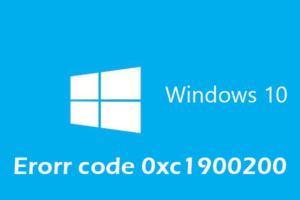-
Table of Contents
- Benefits of Microsoft’s Win32 app isolation for enhanced Windows security
- How Win32 app isolation strengthens protection against malware and cyber threats
- Step-by-step guide to implementing Win32 app isolation for improved Windows security
- Exploring the future of Windows security with Microsoft’s Win32 app isolation
- Q&A
Enhanced Windows Security: Microsoft’s Win32 app isolation for ultimate protection.
Microsoft has recently introduced an improved security feature called Win32 app isolation for Windows. This feature aims to enhance the security of Windows operating systems by isolating Win32 applications from the rest of the system. By isolating these applications, Microsoft aims to prevent potential threats and attacks from spreading across the system, ultimately providing users with a more secure computing experience.
Benefits of Microsoft’s Win32 app isolation for enhanced Windows security
Microsoft has recently launched a new feature called Win32 app isolation, which aims to enhance the security of Windows operating systems. This new development comes as a response to the increasing number of cyber threats and the need for stronger protection against malicious software. By isolating Win32 apps, Microsoft hopes to provide users with a more secure computing experience.
One of the main benefits of Win32 app isolation is its ability to prevent malware from spreading across a system. In the past, if one app became infected with malware, it could easily spread to other apps and compromise the entire system. With Win32 app isolation, each app is contained within its own virtual environment, preventing malware from spreading beyond its boundaries. This containment significantly reduces the risk of a widespread infection and provides users with peace of mind knowing that their system is better protected.
Another advantage of Win32 app isolation is its ability to protect sensitive data. By isolating apps, Microsoft ensures that any data generated or accessed by an app is kept separate from other apps. This means that even if one app is compromised, the attacker will have limited access to sensitive information. This is particularly important for businesses and organizations that deal with confidential data, as it adds an extra layer of protection against data breaches.
Furthermore, Win32 app isolation also improves the overall performance and stability of the system. By isolating apps, Microsoft can better manage system resources and prevent apps from interfering with each other. This results in a smoother and more efficient user experience, as apps are less likely to crash or slow down the system. Additionally, by containing apps within their own virtual environments, Microsoft can better control the impact of any potential vulnerabilities, reducing the likelihood of system-wide issues.
In addition to these benefits, Win32 app isolation also offers improved compatibility with older applications. Many organizations still rely on legacy software that may not be compatible with newer security features. With Win32 app isolation, Microsoft has taken this into consideration and ensured that older applications can still run within their own isolated environments. This allows organizations to maintain their existing software while still benefiting from enhanced security measures.
It is worth noting that while Win32 app isolation provides significant security improvements, it is not a foolproof solution. Users should still exercise caution when downloading and installing apps, as no security measure can completely eliminate the risk of malware. Additionally, it is important to keep the operating system and all apps up to date with the latest security patches to ensure maximum protection.
In conclusion, Microsoft’s Win32 app isolation is a significant step towards enhancing the security of Windows operating systems. By isolating apps within their own virtual environments, Microsoft can prevent malware from spreading, protect sensitive data, improve system performance, and ensure compatibility with older applications. While it is not a perfect solution, it provides users with a more secure computing experience and adds an extra layer of protection against cyber threats. As technology continues to evolve, it is crucial for companies like Microsoft to prioritize security and develop innovative solutions to keep users safe.
How Win32 app isolation strengthens protection against malware and cyber threats
Microsoft has recently launched a new feature called Win32 app isolation, which aims to strengthen protection against malware and cyber threats on Windows operating systems. This development comes as a response to the increasing sophistication and frequency of cyber attacks, which have become a major concern for individuals and organizations alike.
Win32 app isolation is designed to provide an additional layer of security by isolating potentially malicious applications from the rest of the system. This means that even if a user inadvertently downloads or opens a malicious file, the impact on the overall system will be minimized. By containing the threat within a confined environment, the potential for damage and unauthorized access is significantly reduced.
One of the key benefits of Win32 app isolation is its ability to prevent malware from spreading across the system. In traditional setups, if a malicious application manages to gain access to the system, it can easily move laterally and infect other files and applications. This can lead to widespread damage and compromise the security of sensitive data. With app isolation, however, the impact of such an attack is limited to the isolated environment, preventing the malware from spreading and causing further harm.
Another advantage of Win32 app isolation is its ability to protect against zero-day exploits. Zero-day exploits are vulnerabilities in software that are unknown to the vendor and, therefore, have no available patches or fixes. Cybercriminals often exploit these vulnerabilities to launch attacks before they are discovered and patched. By isolating applications, Win32 app isolation can limit the potential damage caused by zero-day exploits, as the isolated environment provides an additional barrier against such attacks.
Furthermore, Win32 app isolation enhances the overall security posture of Windows systems by reducing the attack surface. By isolating potentially vulnerable applications, the overall system becomes less susceptible to attacks. This is particularly important in environments where legacy applications are still in use, as these applications may have known vulnerabilities that can be exploited by cybercriminals. With app isolation, the risk associated with these applications is mitigated, providing a more secure computing environment.
It is worth noting that while Win32 app isolation provides significant security benefits, it is not a silver bullet. It should be seen as a complementary security measure that works in conjunction with other security controls, such as antivirus software, firewalls, and regular software updates. A multi-layered approach to security is always recommended to ensure comprehensive protection against a wide range of threats.
In conclusion, Microsoft’s launch of Win32 app isolation is a significant step towards strengthening protection against malware and cyber threats on Windows operating systems. By isolating potentially malicious applications, the impact of attacks is minimized, preventing the spread of malware and reducing the attack surface. While app isolation is not a standalone solution, it provides an additional layer of security that complements existing security controls. As cyber threats continue to evolve, it is crucial for individuals and organizations to adopt proactive measures like Win32 app isolation to safeguard their systems and data.
Step-by-step guide to implementing Win32 app isolation for improved Windows security
Microsoft has recently launched a new feature called Win32 app isolation, which aims to enhance Windows security. This feature is designed to isolate Win32 applications from the rest of the operating system, providing an additional layer of protection against potential threats. In this article, we will provide a step-by-step guide on how to implement Win32 app isolation for improved Windows security.
To begin with, it is important to note that Win32 app isolation is only available on Windows 10 version 1903 or later. Therefore, before proceeding with the implementation, ensure that your system meets this requirement. Once you have confirmed this, you can move on to the next step.
The first step in implementing Win32 app isolation is to enable the feature. To do this, open the Group Policy Editor by typing “gpedit.msc” in the Run dialog box. Once the Group Policy Editor is open, navigate to “Computer Configuration” > “Administrative Templates” > “System” > “Isolated User Mode”. Here, you will find the “Enable Isolated User Mode” policy. Double-click on it and select the “Enabled” option. Click “Apply” and then “OK” to save the changes.
After enabling the feature, the next step is to configure the isolation mode for specific applications. To do this, open the Registry Editor by typing “regedit” in the Run dialog box. Once the Registry Editor is open, navigate to “HKEY_LOCAL_MACHINESOFTWAREMicrosoftWindows NTCurrentVersionIsolatedApplications”. Here, you will find a list of applications that can be isolated. To add a new application, right-click on the “IsolatedApplications” key, select “New” > “Key”, and give it a name. Then, right-click on the newly created key, select “New” > “String Value”, and name it “PackageId”. Double-click on the “PackageId” value and enter the Package Family Name of the application you want to isolate. Click “OK” to save the changes.
Once you have configured the isolation mode for specific applications, the next step is to enable the isolation mode for those applications. To do this, navigate to “HKEY_LOCAL_MACHINESOFTWAREMicrosoftWindows NTCurrentVersionIsolatedApplications[ApplicationName]”. Here, you will find a “IsolationEnabled” value. Double-click on it and set the value to “1” to enable isolation for the application. Click “OK” to save the changes.
After enabling the isolation mode for specific applications, the final step is to test the implementation. To do this, launch the isolated application and observe its behavior. If the application runs without any issues and is isolated from the rest of the operating system, then the implementation has been successful.
In conclusion, Win32 app isolation is a new feature introduced by Microsoft to enhance Windows security. By isolating Win32 applications from the rest of the operating system, this feature provides an additional layer of protection against potential threats. By following the step-by-step guide provided in this article, you can easily implement Win32 app isolation and improve the security of your Windows system.
Exploring the future of Windows security with Microsoft’s Win32 app isolation
Microsoft has recently launched a new feature called Win32 app isolation, which aims to improve the security of Windows operating systems. This development comes at a time when cyber threats are becoming increasingly sophisticated, and the need for robust security measures is more important than ever. In this article, we will explore the future of Windows security with Microsoft’s Win32 app isolation and analyze its potential impact.
Win32 app isolation is designed to isolate applications from each other and the underlying operating system, thereby preventing malicious code from spreading and causing damage. This feature builds upon the existing security measures in Windows, such as user account control and sandboxing, to provide an additional layer of protection. By isolating apps, Microsoft aims to minimize the impact of potential security breaches and limit the ability of attackers to exploit vulnerabilities.
One of the key benefits of Win32 app isolation is its ability to protect against zero-day exploits. Zero-day exploits are vulnerabilities that are unknown to software vendors and, therefore, have no available patches or fixes. These exploits can be particularly dangerous as they give attackers a window of opportunity to exploit a vulnerability before it is discovered and patched. With Win32 app isolation, even if an attacker manages to exploit a zero-day vulnerability in one application, the isolation prevents the attack from spreading to other apps or the operating system.
Another advantage of Win32 app isolation is its ability to mitigate the impact of malware infections. Malware, such as viruses, worms, and ransomware, can wreak havoc on a system by infecting multiple applications and compromising sensitive data. By isolating apps, Win32 app isolation limits the ability of malware to spread and minimizes the potential damage. This is especially important in enterprise environments where a single infected app can have far-reaching consequences.
Furthermore, Win32 app isolation enhances the overall security posture of Windows by reducing the attack surface. The attack surface refers to the potential points of vulnerability that can be exploited by attackers. By isolating apps, Win32 app isolation reduces the attack surface by limiting the interactions between applications and the operating system. This makes it more difficult for attackers to find and exploit vulnerabilities, thereby increasing the overall security of the system.
However, it is important to note that Win32 app isolation is not a silver bullet for Windows security. While it provides an additional layer of protection, it should be used in conjunction with other security measures, such as regular software updates, strong passwords, and user education. Additionally, the effectiveness of Win32 app isolation depends on proper configuration and management. Organizations must ensure that apps are properly isolated and that any necessary exceptions or exclusions are carefully considered.
In conclusion, Microsoft’s Win32 app isolation is a significant step towards improving the security of Windows operating systems. By isolating apps from each other and the underlying operating system, Win32 app isolation provides an additional layer of protection against zero-day exploits and malware infections. It also reduces the attack surface, making it more difficult for attackers to find and exploit vulnerabilities. However, it is important to remember that Win32 app isolation is not a standalone solution and should be used in conjunction with other security measures. With the ever-evolving threat landscape, it is crucial for organizations to stay vigilant and adopt a multi-layered approach to security.
Q&A
1. What is Win32 app isolation?
Win32 app isolation is a security feature introduced by Microsoft to enhance the security of Windows operating systems. It isolates Win32 applications from each other and the operating system, preventing potential malware or malicious activities from spreading.
2. How does Win32 app isolation improve Windows security?
Win32 app isolation improves Windows security by creating a secure environment for running applications. It prevents unauthorized access to sensitive system resources, reduces the risk of malware infections, and enhances overall system stability.
3. What are the benefits of Win32 app isolation?
The benefits of Win32 app isolation include increased protection against malware, improved system stability, reduced risk of data breaches, enhanced privacy, and better control over application behavior and resource usage.
4. Is Win32 app isolation available for all Windows versions?
Win32 app isolation is available for Windows 10 and later versions. It may not be available for older Windows versions, as it is a newer security feature introduced by Microsoft.Microsoft has launched Win32 app isolation as a measure to improve Windows security.







![[Solved]: “Error Code 0xC004F050” in Windows 11 in No Time](https://www.tipsbin.net/wp-content/uploads/2023/08/8e64f519d2390bfc001a41744be2cbd4-300x199.jpeg)

